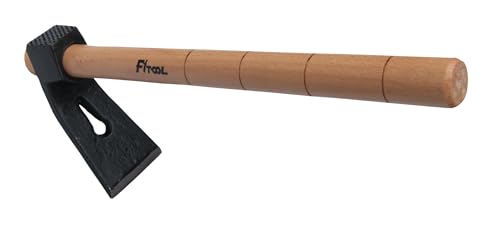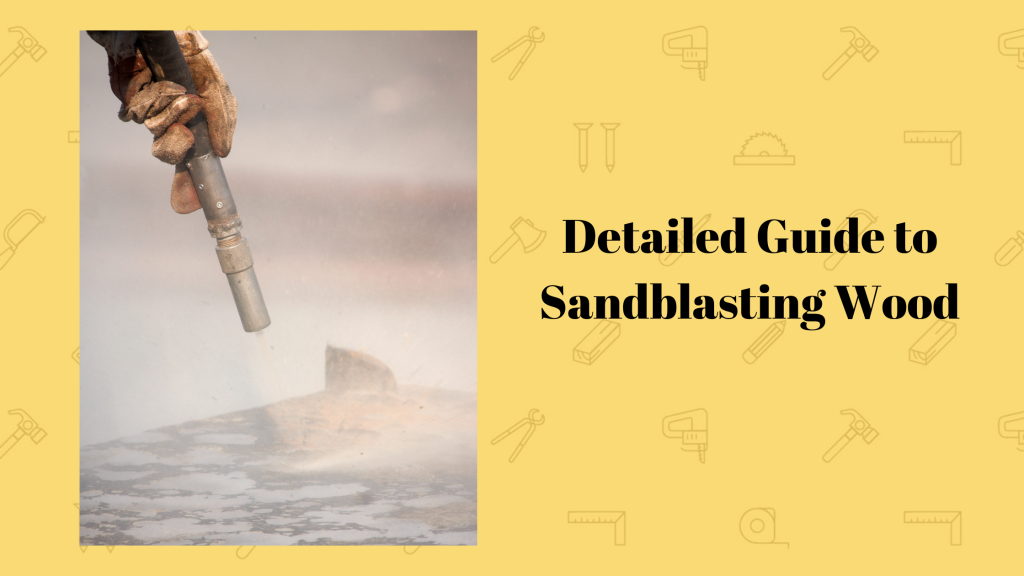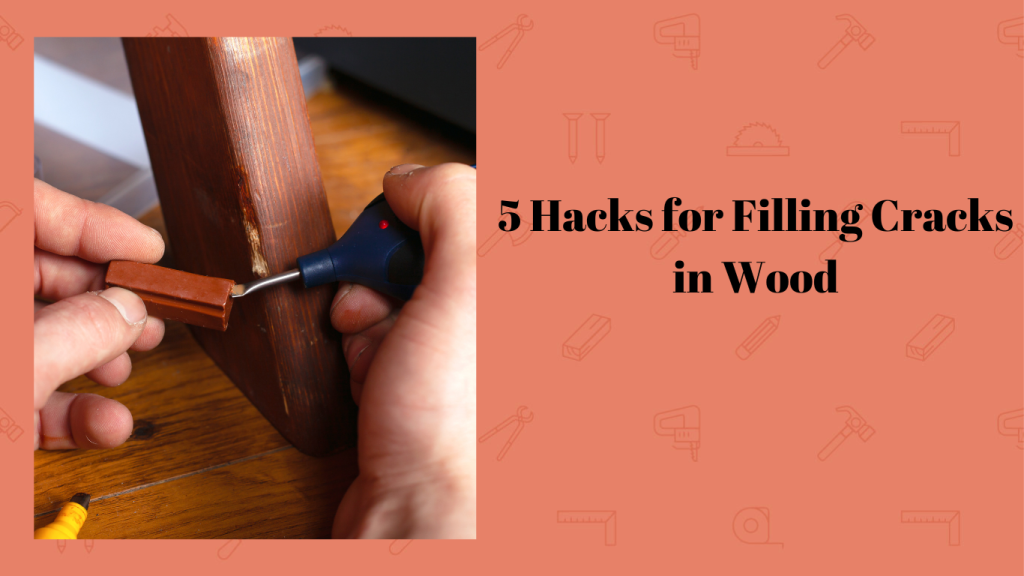The best wood-cutting tools make precise and repeatable cuts. Whether you’re a beginner to woodcutting or a seasoned woodworker learning to perfect your craft, the key is in the cuts.
Specialized tools help create clean wood sawn cuts on the rough lumber. However, each cutting tool has its strengths and limits, and knowing them will help you to create the perfect toolbox.
I’ve had the opportunity to work extensively with woodwork in the last 30 years, which means I’ve handled just about every handheld and power tool. In this guide, I’ll tap into this woodworking experience to show you the essential cutting tools to elevate your craft.
Let’s get started.
15 Essential Wood Cutting Tools for the Perfect Tool Box
1. Adze

Adzes, reminiscent of axes but distinct in their perpendicular edge, are traditional wood-cutting tools I frequently use for shaping and smoothing.
Unlike axes which chop wood, my adze is indispensable for carving depth, particularly when I’m crafting grooves in wooden blocks for pots and bowls.
A quality adze design offers superb control, allowing me to effortlessly “scoop” out grooves with a natural swing, ensuring precision with every hit and scrape on the wood surface.
How Do You Sharpen an Adze?
Sharpening an adze is a blend of technique and precision. Start with a bench grinder, the key to getting a sharp inner bevel. Use a drum that’s slightly smaller than the curve of the adze for an even grind. Carefully work on the outer edge, ensuring consistent pressure from one corner to the other.
The final touch involves honing both inner and outer bevels, steering clear of the edge arcs. This process rejuvenates the steel edge, priming it for crafting perfect bevels.
2. Axe
A carpentry axe, slightly more extended and lighter than a hatchet, is a woodworker’s trusty sidekick. With its parallel cutting edge and ergonomic handle, it’s perfect for chopping, splitting, and debarking wood, prepping it for intricate carving.
When I wield this axe, it feels like an extension of my arm, slicing through green wood to carve out blanks with precision. Its low-angled blade is the real “cutting edge” of craftsmanship, delivering clean, skew-angled slices with every swing.
What Makes a Quality Axe
You can easily identify a high-quality axe by its thin cutting edge and heavy steelhead.
As a rule, the thicker the head, the more powerful the stroke. The best axes also have a hickory wood handle because it absorbs shock and prevents the handle from breaking.
3. Band Saw
Band saws are powerhouses with metal-toothed blades, rotating in harmony on wheels to slice through wood, plastic, or metal. Their stationary setup is a boon for creativity, letting me guide wood in any direction for that perfect cut.
Whether it’s crafting curves or tackling irregular shapes, the band saw’s versatility makes it an essential tool in my woodworking arsenal.
Who Needs a Bandsaw?
Anyone who wants a specialized handsaw capable of making deep rips, curves, and shapes needs a bandsaw. You can also use it to cut materials like plywood and MDF that usually damage handsaws
4. Chainsaw
Chainsaws, with their teeth-laden, rotating chains, are the powerhouses of wood cutting. Propelled by a petrol engine, these tools are essential for slicing timber into logs or firewood.
In my hands, they’re also perfect for pruning tree limbs and clearing thick brush, demonstrating their versatility beyond just basic chopping.
What Can Damage a Chainsaw?
Cutting into dirt is the primary cause of chainsaw damage.
You’re more likely to cut into rocks and dirt when sawing through wood on the ground, and when your chainsaw dips into dirt, the rocks grind at the blade and dull the clutters.
Dirt can also cause the chain to stretch by wearing out the chain’s links.
5. Chisel
A chisel, with its beveled edge and handle, is indispensable for carving and shaping wood, offering precision and control. Whether pushing the blade along the wood or using a mallet for impact, it’s a tool that transforms rough timber into intricate art.
Specialized chisels like gouges and veiners are my go-to for crafting the curves and hollows in spoons and bowls. They’re not just tools; they’re the sculptor’s brush, bringing wood to life in the hands of a skilled craftsman.
Which Chisel Should You Buy First?
Bench chisels are the best first purchase for new woodworkers. They’re 4-inch all-rounders that are strong enough to withstand hard use and delicate enough for detail work.
When you strike a bench chisel, its short length enables maximum energy to reach the cutting edge. So they’re ideal for beginners who need a chisel for paring, trimming, and joinery.
6. Circular Saw

The circular saw, a dynamic wood cutting tool with a toothed blade, is a staple in my workshop for its adaptability and straightforward upkeep. It’s my trusted ally for creating everything from miters and bevels to crosscuts and notches.
I recently upgraded to a 6 ½ inch cordless Dewalt Circular Saw trading cords for freedom of movement – a game-changer despite the higher price.
Remember, with great power comes great responsibility: these saws are loud and messy, so gear up with face and ear protection to tackle your projects safely and efficiently.
How Deep Can a Circular Saw Cut?
The depth of a circular saw’s cut depends on the diameter of its motor and arbor.
For instance, a 7 ½ inch blade will usually cut 2 ½ inches deep when set to a 90-degree angle. However, circular saws have settings to change the depth and angle of the cut.
7. Handsaw
In my workshop, handsaws are indispensable for shaping wood, plastic, and metal. Each type, like the straight-cutting tenon saw or the intricate-cutting keyhole saw, has its specific role. There are different types of wood cutting handsaws designed for unique purposes.
Through experience, I’ve learned a valuable lesson: most handsaws, especially those with a dark strip along the tooth line, can’t be resharpened. This dark strip indicates induction hardening, rendering the blade as hard as a file. So, when they dull, it’s often more cost-effective to replace them rather than attempt a futile sharpening.
When Should You Use a Hand Saw?
You should use a handsaw when cutting narrow areas because you have better control over the cut.
For instance, I use my Japanese pull saw to undercut interior trim and chop 6×6 timber. Both tasks need a steady force and thin kerf, which are areas where a hand saw shines.
8. Hand Planer
In my crafting adventures, hand planers have been trusty wood cutting tools for finely shaving wood to perfection. While power planers offer speed, they lack the finesse needed for detailed work – they’re like using a sledgehammer for a thumbtack job.
That’s why, for those intricate furniture touches, even the most high-tech carpenters keep a hand planer handy. It’s a classic case of ‘old but gold’ in the toolbox!
How to Use a Hand Planer?
The first step to using a hand planer is to secure the workpiece and lock the blade into place with the hand screw.
Next, identify the grain’s rise, which is where it continues off the edge of the workpiece. This bit helps you prevent splintering and splitting before applying forward pressure on the wood.
You’re doing it right when you notice wood shavings at the back of the plane.
9. Japanese Pull Saw

The Japanese pull saw, or nokogiri, is a gem in my woodworking toolkit, cutting efficiently on the pull stroke. Unlike the push-oriented Western saws, these offer precise control and easy cuts. Among the types – the versatile ryoba, single-edged kataba, and rigid-backed dozuki – each has its charm.
My personal go-to for years has been the SUIZAN 9.5 9.5-inch hand Saw It’s a beginner’s dream with its enduring sharpness and ultra-fine cuts. Like a trusty sidekick, my SUIZAN has been a constant companion in my woodworking journeys
Can You Cut Plywood With a Japanese Pull Saw?
You shouldn’t cut plywood with Japanese pull saws because, like most handsaws, they’re degraded by the resins in plywood. So, unless you don’t mind losing your nokogiri, I won’t recommend cutting plywood with it.
10. Jigsaw
A jigsaw, with its reciprocating blade, is the unsung hero of my workshop, perfectly suited for those tricky, irregular cuts in wood. Its versatility in handling different materials and mastery in making intricate cuts like circles and curves make it an indispensable tool.
I often lean on my jigsaw as a neater, more precise alternative to circular saws. It’s quieter and tidier, lacking the usual mess of flying wood chunks, allowing me to work with a sense of calm precision
Do I Need a Jigsaw When I Have a Circular Saw?
While jigsaws can sometimes replace a circular saw, it isn’t ideal for making crosscuts and rip cuts. Similarly, the circular saw is too large to make intricate cuts like a jigsaw.
Since both tools are uniquely equipped, I’d recommend adding a jigsaw and circular saw to your toolbox.
11. Miter Saw

A miter saw in my go-to power tool for precision cuts. With its stationary design, I simply pull the blade down onto the wood, controlling the angle with ease.
The size matters here: for larger projects like crown molding, my 12-inch miter saw trumps the 10-inch, offering greater cutting capacity. Just like its cousin, the circular saw, miter saws can be messy, spewing dust everywhere.
That’s why I swear by the DEWALT 12-inch model with its dust collection boot. It’s a lifesaver for keeping the workspace clean. And if your miter saw lacks this feature, seriously consider getting a dust collection hood It’s not just about cleanliness; it’s about working smarter
What should you never cut with a Milter Saw?
You should never cut metal with a miter saw. It’s not built for the heat and pressure of slicing through metals. Doing so risks damaging the blade and even your project. It’s like bringing a knife to a chainsaw battle – not the best match! Stick to wood for a smooth, safe cut.
12. Reciprocating Saw
A reciprocating saw, often called a saber saw, is my go-to for tough, no-nonsense cuts. This handheld powerhouse, with its push-pull action, tears through everything from unruly tree roots to rough lumber.
It’s more of a brute force champion in my tool arsenal, not quite the finesse player for woodworking, but indispensable for its versatility and ruggedness in home projects.
How Deep Can a Reciprocating Saw Cut?
A reciprocating saw will usually cut 2 inches thinner than its own blade. So, 10-inch blades will usually cut depths of 8 inches.
For instance, my 6-inch reciprocating saw cuts 4×4 posts to prepare for shelving. If I want to make deeper cuts, I use a chainsaw because it can cut up to 19 inches in a few minutes.
13. Scroll Saw

A scroll saw is my go-to wood cutting power tool for intricate woodworking designs. This benchtop tool, with its fine blade and up-and-down motion, excels at delicate cuts and detailed patterns.
It’s especially handy when a jigsaw or coping saw is too cumbersome for those tight curves and edges. While it’s primarily meant for thinner materials, I’ve pushed its limits to cut up to ½ inch, though it’s a bit of a challenge.
For crafting detailed toys or art, my go-to is the Wen 3921 Scroll Saw. Its unique two-direction blade feature has been a game-changer for making precise, straight cuts in my intricate projects.
Which is Better Scroll Saw or Jigsaw?
If you could only buy one, I’d choose the scroll saw.
When I use a scroll saw to create art on wood, I never worry about an awkward hand movement ruining the pattern. Plus, I can usually use a coping saw to replace a jigsaw, but I haven’t seen a fitting alternative for my scroll saw.
14. Table Saw

A table saw is arguably the most versatile wood cutting machine for crafts.
It’s ingeniously designed with a circular saw blade mounted under the table, projecting through for precision cuts. This setup includes a stable base, an adjustable table, a rip fence for accuracy, and a hand wheel to control blade height.
Ideal for beginners and pros alike, it’s my top recommendation for anyone seeking consistent, high-quality cuts with minimal learning curve. While table saws are a significant investment, their capability to produce clean, repeatable cuts is unmatched.
If budget or space is tight, I suggest starting with a circular saw, but for a long-term, space-saving solution, a compact model like the 53-pound Dewalt Table Saw. is a fantastic choice.
How to Safely Use a Table Saw
To safely use a table saw, start by standing off to the side to prevent kickback injuries. Kickback, a sudden ejection of wood towards the user, can be dangerously unpredictable, pulling your hands towards the blade. From my experience, including a close call involving a cousin years ago, respecting this power tool’s force is crucial.
Here’s a condensed safety checklist:
- Stay alert for any stuttering, which means you should stop and troubleshoot.
- Don’t rip uneven boards; their tendency to twist increases kickback risk.
- Always use push sticks for hand safety and to keep the wood stable.
- Never remove the riving knife; it prevents the cut wood from pinching and kicking back.
15. Wood Carving Knives

My woodworking journey truly began with a quality carving knife set, essential wood cutting tools for anyone starting in the craft. Ideal for whittling and roughing out, these tools efficiently strip away wood chunks, shaping your vision into reality.
I swear by my Cor Cordium Whitting Set, an affordable gem with fixed, sharp blades. It even includes soft basswood blocks, perfect for beginners. Using this set, I carved carved a charming wooden bird, an experience that solidified my love for woodworking and the importance of having the right tools in your arsenal.
What is the Best Shape for a Wood Carving Knife?
The perfect wood carving knife shape hinges on your project. Curved edges excel in scooping out hollows, like when I’m carving bowls or pots, ensuring a smooth, controlled cut without skidding.
In contrast, a straight-edge knife is my go-to for precision work. It’s ideal for detailing and navigating tight crevices where a curved blade just can’t reach. So, whether it’s creating depth or intricate details, choosing the right knife shape can make all the difference in your carving experience.
Tools that Transform
The right wood cutting tools can up your woodwork game by giving you those clean and precise cuts. However, if you’re looking into artisan woodworking, I know the perfect Japanese wood saws for you.
I’ve covered the top 5 Japanese saws in a straightforward guide, so be sure to check it out!
Frequently Asked Questions
What is the Most Versatile Wood Cutting Tool?
Circular saws are the most versatile wood cutting tools because they allow you to perform the main types of cuts with one tool. For example, a table saw has adjustable settings to allow you to make crosscuts, bevel cuts, and straight cuts.
What Tool is Used to Cut Wood in Tight Spaces?
Jigsaws, scrollsaws, and hand-coping saws are the perfect tools for cutting wood in tight spaces. You can use a jigsaw to cut shapes and curves in wood, while scrollsaws can go between edges without cutting through the wood. If you intend to make a hole in wood, a keyhole saw is an effective choice.
What is The Best Tool For Precision Wood Cutting?
A miter saw is the ideal tool for making precision cuts in wood. It is designed with a handle to allow you to pull its circular saw downward into the wood, giving you complete control over your cut’s angle.
What Tool is Best for Chopping Wood?
Handsaws are the best tools to cut wood into different shapes. They rely on muscle power, which allows you to control the depth while making precision cuts. The powered alternative is a table saw.
*This post may contain affiliate links. Please see my disclosure to learn more.



